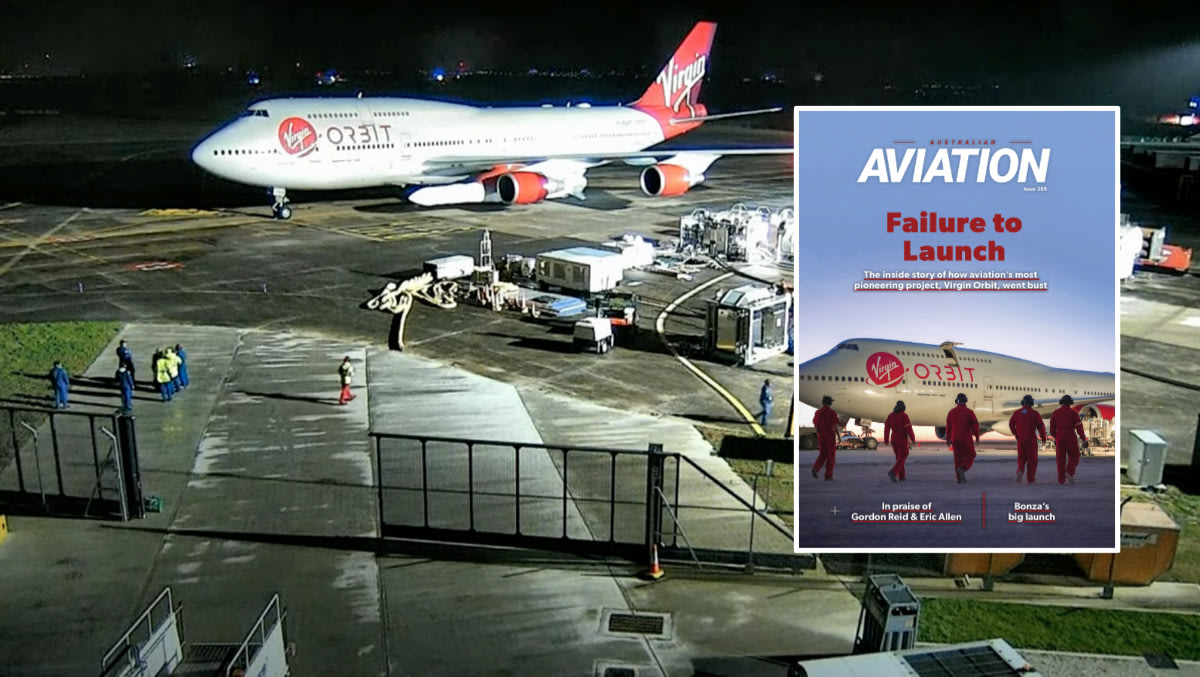An official report by the UK government into Virgin Orbit’s bodged blast-off in January has painted an upbeat message of the country’s prospects of becoming a launch nation.
The Lessons Learned investigation, which you can read here, said Orbit’s failure demonstrated Britain’s ability to launch “safely, legally and with the appropriate coordination across government”.
It concluded the country is in a “stronger position than ever” for two potential blast-offs in the Shetland Islands and northern Scotland.
Almost 12 months ago, Orbit’s unique satellite-launching 747 failed after taking off from Cornwall in south-west England. A later investigation revealed a simple fuel filter dislodged mid-launch, leading to the loss of all nine payloads onboard.
The incident led to the company ceasing all operations and selling all its assets, including its specially adapted aircraft, to four winning bidders for just $36 million – barely 1 per cent of Orbit’s valuation in 2021.
Now, a fresh UK post-mortem has identified the lessons learned, including a proposal to streamline the licensing process and encourage information sharing between government departments.
However, the report criticised Orbit’s “over-optimistic” delivery plans and a launch window that “lacked credibility”.
In a December webinar, the UK Space Agency’s investment director, Craig Brown, said, “It was a blow, right? It was hugely disappointing for everybody involved. It reflects very well the challenges of launch and space in general.”
Virgin Orbit was one of only a handful of companies worldwide to launch rockets horizontally from an aircraft rather than vertically from a traditional spaceport.
The plan worked because the 747 has a little-known capacity to attach a fifth engine, enabling it to carry a rocket.
After the satellites were fitted underneath the rocket’s nose, or fairing, the projectile was attached underneath the left wing of the Jumbo Jet.
The aircraft then took off and cruised upwards to a launch position of around 35,000 feet.
“The pilot then pulls up on the 747 to a 30-degree angle because we want the rocket facing the right direction, and we want a bit of upward pitch,” Virgin Orbit chief executive officer Dan Hart told the Space Connect Podcast.
“The other pilot, at the right moment, pushes a button on the panel of the cockpit to release the rocket, which drops — or glides — for about four or five seconds until it’s safely able to start its engines.”
Seconds afterwards, the 747 banks right to stay clear of the rocket’s path.
Speaking to Space Connect earlier this year, ELA executive chairman Michael Jones said the system was not as reliable as it seemed.
Jones, who is also the founder of Australian airline Rex, argued if you launch rockets vertically and they don’t ignite, the projectile sits on the launchpad. But, if you drop it horizontally from an aircraft, “you’ve dropped a bomb”.
“It sounds great, but it’s a challenging thing they’re doing.”
Jones was speaking to Australian Aviation in an earlier print magazine. To find out more and subscribe, click here.
















